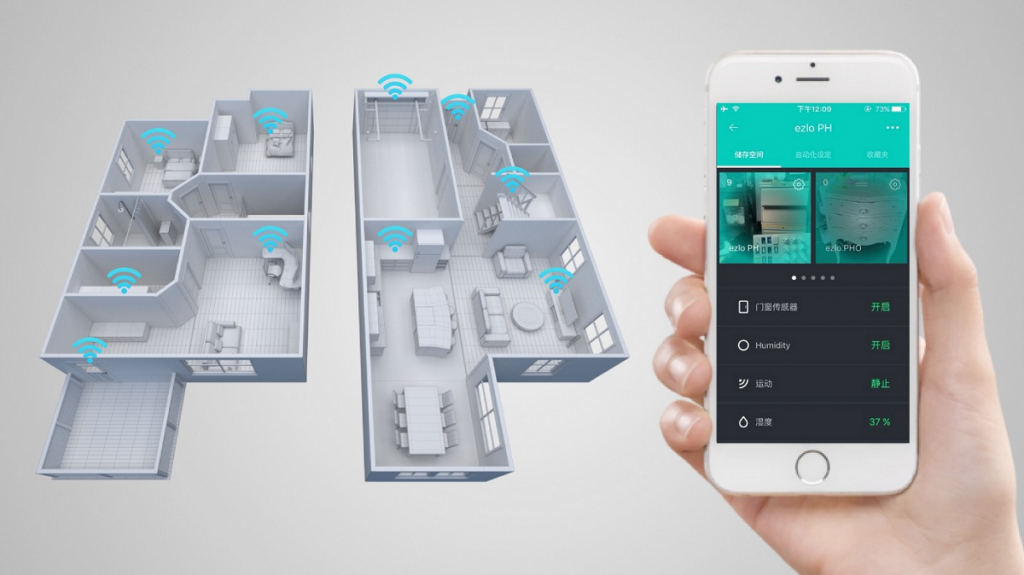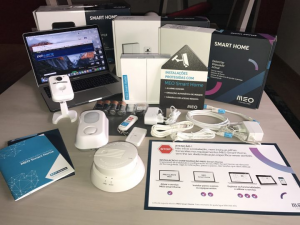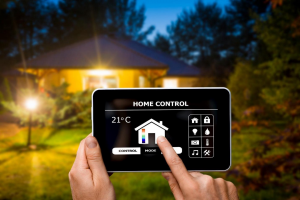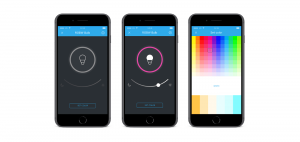5 NEW WAYS TO UPDATE YOUR SMART HOME IN 2024
- March 31, 2022
- by Ezlo Admin
Updating your smart home automation system is easier than you think.

Just like any other technology-related industry, home automation devices keep evolving rapidly; so rapidly 2024 is considered to be the year of the smart homes.
If you already own a home automation system expandable for more devices, here’s a quick list of 5 ideas on how you can make your home even smarter than before.
- Modernize your sensors
- Install smart locks
- Add some artificial intelligence
- Sleep smarter
- Purify your air
1. Modernize your sensors
Sensors help us retrieve information that is necessary to be sure everything’s OK at home while we’re away. No wonder warning devices like smoke detectors, door, and water leak sensors, voltage controllers, and others are so popular at least one of them makes a part of almost every home nowadays.
However, many first-generation sensors have a common problem: you never know when their batteries are going to die. Moreover, stats show that every fourth accident occurred because dead batteries in smoke detectors caused home fires and even fire deaths.
Today’s smart sensors check their batteries automatically. Apart from uniquely designed sensors like Nest Protect that check themselves automatically every day, there’s also a myriad of detectors using Z-Wave home automation technology.
One of the requirements of the Z-Wave technology is to ensure each supported device also checks its battery status and provides this data to the central hub. So if you’re still using old sensors, consider switching to the ones supporting the Z-Wave technology.
2. Install smart locks
With physical locks, there’s always a chance of forgetting to lock the door or, even worse, locking yourself out. This is where smart locks may come in handy.
Smart locks offered by Kwikset, Baldwin, or Yale, depending on their models, allow not only automatic door closing or opening but also lock control using a smartphone. Thus, in addition to the door locking and unlocking with a push of a button on your smartphone, you will always know if someone unexpectedly entered your apartment.
Yes, there’s a huge concern about whether smart locks are secure enough, and that’s why we recommend you not replace all of your old locks, but supplement them with a smart one.
3. Add some artificial intelligence
You should’ve already heard of virtual assistants like Google Home and Amazon Alexa. In addition to doing some common stuff luck playing music and setting alarms, they can also control smart devices. Depending on your already installed home automation system, you might find that the voice assistant can (or may not) further simplify home control for you.
In addition to that, voice assistants are getting smarter every month and you don’t need to upgrade the physical devices to make them smarter. This means the list of supported home automation devices will grow over time, as well as your possibilities of controlling them through voice.
4. Sleep smarter
Have you considered devices that will help you sleep better?
One of the newest ones is Nightingale. It’s a device that passes through two plugs (thus not consuming your power outlets) and emits sounds masking common noises and helping you to sleep. And just like any other smart home device, it can be controlled via a mobile app and integrated into your existing home automation system.
Other devices for use at night: Sleep Infuser emitting low pulsing hums, Aura promoting your sleep with melatonin-inducing light and calming sounds, and LIFX LED bulbs.
5. Purify your air
If home automation technologies allow controlling the quality of your air, how about automatic air cleaning?
For instance, have you heard of Airmega devices? These are HEPA air purifiers that are smart enough to adapt to your apartment conditions and allow control via a mobile app or Alexa. Alternatives are the Holmes Smart Air Purifier supporting IFTTT and the beautifully designed LG Signature series.
The industry of home automation keeps evolving rapidly so, of course, there are a lot more smart devices in the wild. Yet many of them still require our review to get recommended, while others — like smart frying pans and even hairbrushes — are so unusual we’ll cover them later in a separate article. Keep following us on social networks!
Related Resources:




